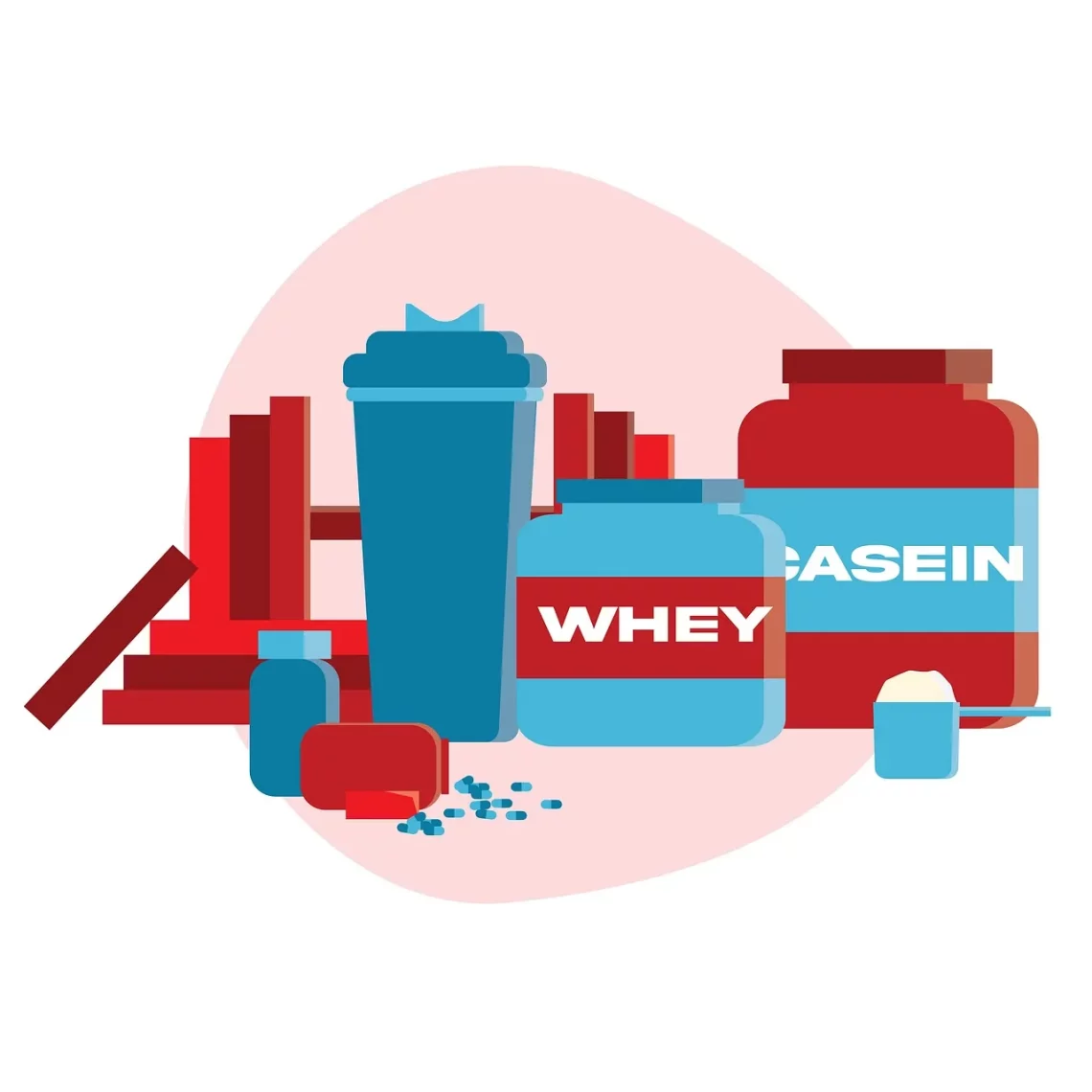
The Ultimate Guide to Gluten Free Dairy Free Protein Powder
In recent years, the demand for gluten-free and dairy-free products has surged significantly, reflecting a growing awareness of dietary restrictions and health-conscious choices. People are increasingly seeking alternatives that not only accommodate their unique nutritional needs but also provide the essential proteins required for muscle recovery, weight management, and overall well-being. Protein powders have become a staple in many diets, especially for those engaging in fitness activities or looking to enhance their nutritional intake.
The rise of plant-based diets has further fueled this trend, with many individuals opting for protein sources derived from plants rather than traditional dairy or gluten-containing grains. This shift has opened up a plethora of options, making it easier than ever to find protein powders that cater to various dietary preferences. As consumers become more educated about the ingredients in their supplements, they are prioritizing quality, sustainability, and the absence of allergens.
Navigating the world of gluten-free and dairy-free protein powders can be overwhelming due to the vast array of products available on the market. Understanding the different types of protein sources, their nutritional profiles, and how they fit into a balanced diet is essential for making informed choices. This guide aims to provide insights into what makes a protein powder gluten-free and dairy-free, explore the benefits of various plant-based protein sources, and offer tips on incorporating them into your daily routine.
Understanding Gluten-Free and Dairy-Free Protein Powders
When it comes to protein powders, understanding the definitions of gluten-free and dairy-free is crucial. Gluten is a protein found in wheat, barley, and rye, and it is a common concern for individuals with celiac disease or gluten sensitivity. On the other hand, dairy contains lactose and casein, which can cause issues for those with lactose intolerance or dairy allergies.
Gluten-free protein powders are those that do not contain any ingredients derived from gluten-containing grains. Common gluten-free sources of protein include brown rice, pea, hemp, and quinoa. These protein powders are often processed in facilities that avoid cross-contamination, ensuring a safe product for those with sensitivities.
Dairy-free protein powders, as the name suggests, are free from any dairy products. They are particularly popular among vegans and those who are lactose intolerant. Plant-based proteins are primarily the source for these powders, offering a range of amino acids and health benefits without the complications of dairy.
The combination of gluten-free and dairy-free labels indicates that these protein powders are suitable for individuals with multiple dietary restrictions. However, it is essential to read labels carefully, as some products may contain additives or flavorings that do not meet these criteria.
Choosing the right protein powder involves considering not only dietary restrictions but also the specific health goals one aims to achieve. Whether for muscle building, weight loss, or general wellness, selecting a protein powder that aligns with your objectives is key to maximizing its benefits.
Popular Plant-Based Protein Sources
Several plant-based protein sources have gained popularity in recent years, each offering unique nutritional benefits. Understanding these sources can help you select the right protein powder for your needs.
1. **Pea Protein**: Derived from yellow split peas, this protein is rich in essential amino acids and is easily digestible. It is particularly high in branched-chain amino acids (BCAAs), which are crucial for muscle recovery and growth. Additionally, pea protein is hypoallergenic, making it an excellent choice for those with food sensitivities.
2. **Brown Rice Protein**: This protein source is obtained from whole grain brown rice. While it is not a complete protein on its own, it can be combined with other plant proteins to provide a full spectrum of amino acids. Brown rice protein is also rich in fiber and can support digestive health.
3. **Hemp Protein**: Extracted from hemp seeds, this protein powder contains healthy omega-3 and omega-6 fatty acids, along with fiber. Hemp protein is known for its nutty flavor and is a complete protein, making it a great option for vegans.
4. **Quinoa Protein**: Quinoa is often considered a superfood due to its high protein content and essential amino acids. Quinoa protein powder retains these benefits and is gluten-free as well. It is an excellent option for those looking to add more nutrients to their diet.
5. **Pumpkin Seed Protein**: This lesser-known protein source is rich in magnesium, zinc, and iron, making it a nutrient powerhouse. Pumpkin seed protein has a rich, earthy flavor and is often blended with other protein sources to enhance its amino acid profile.
When selecting a plant-based protein powder, it’s essential to consider the flavor, texture, and how it blends with other ingredients, especially if you plan to incorporate it into smoothies, baked goods, or other recipes.
Benefits of Using Gluten-Free and Dairy-Free Protein Powder
Incorporating gluten-free and dairy-free protein powders into your diet can offer a range of health benefits, making them a valuable addition to your nutritional regimen.
1. **Digestibility**: Many individuals find that plant-based protein powders are easier to digest compared to their dairy-based counterparts. This can be especially beneficial for those with lactose intolerance or dairy allergies, as they avoid the discomfort associated with consuming dairy products.
2. **Nutrient Density**: Plant-based protein powders often come packed with additional nutrients, including vitamins, minerals, and phytonutrients. These compounds can support overall health and wellness, providing more than just protein.
3. **Weight Management**: Protein is known for its satiating properties, helping to curb hunger and reduce cravings. Including gluten-free and dairy-free protein powders in your diet can support weight loss or maintenance goals by making meals more filling.
4. **Sustainable Choice**: Many plant-based protein sources have a lower environmental impact than animal-based proteins. Choosing gluten-free and dairy-free options can contribute to a more sustainable lifestyle while still meeting your protein needs.
5. **Versatility**: These protein powders can be used in a variety of recipes, from smoothies and protein bars to baked goods and soups. This versatility allows for easy incorporation into different meals and snacks throughout the day.
As with any dietary supplement, it’s important to remember that protein powders should complement a well-balanced diet, not replace whole foods. They can be a helpful tool in meeting your nutritional goals, but whole food sources of protein, such as legumes, nuts, seeds, and whole grains, should also be prioritized.
How to Incorporate Protein Powder into Your Diet
Integrating gluten-free and dairy-free protein powder into your diet can be simple and enjoyable. Here are some creative ways to include it in your daily routine:
1. **Smoothies**: One of the easiest ways to consume protein powder is by adding it to smoothies. Blend your favorite fruits, vegetables, and a scoop of protein powder for a nutritious on-the-go meal. Experiment with different combinations to find your perfect flavor profile.
2. **Baking**: Protein powder can be seamlessly incorporated into baked goods like muffins, pancakes, and protein bars. Substitute a portion of the flour in your recipes with protein powder to boost the protein content without sacrificing flavor.
3. **Oatmeal**: Stirring protein powder into your morning oatmeal or overnight oats is a great way to enhance its nutritional value. It adds creaminess and a protein boost to your breakfast, keeping you satisfied throughout the morning.
4. **Soups and Stews**: For a savory approach, consider adding protein powder to soups or stews. The powder will blend in well, especially if it’s a smooth soup, and you’ll increase the protein content of your meal without altering the taste.
5. **Energy Bites**: Make your own energy bites by mixing protein powder with oats, nut butter, honey, and other ingredients. Roll them into bite-sized balls for a convenient snack that’s packed with protein.
By exploring these various methods of incorporating protein powder into your meals, you can easily meet your dietary needs while enjoying a diverse range of flavors and textures.
Remember, this article is not intended as medical advice. If you have specific health concerns or dietary restrictions, it’s always best to consult with a healthcare professional.




